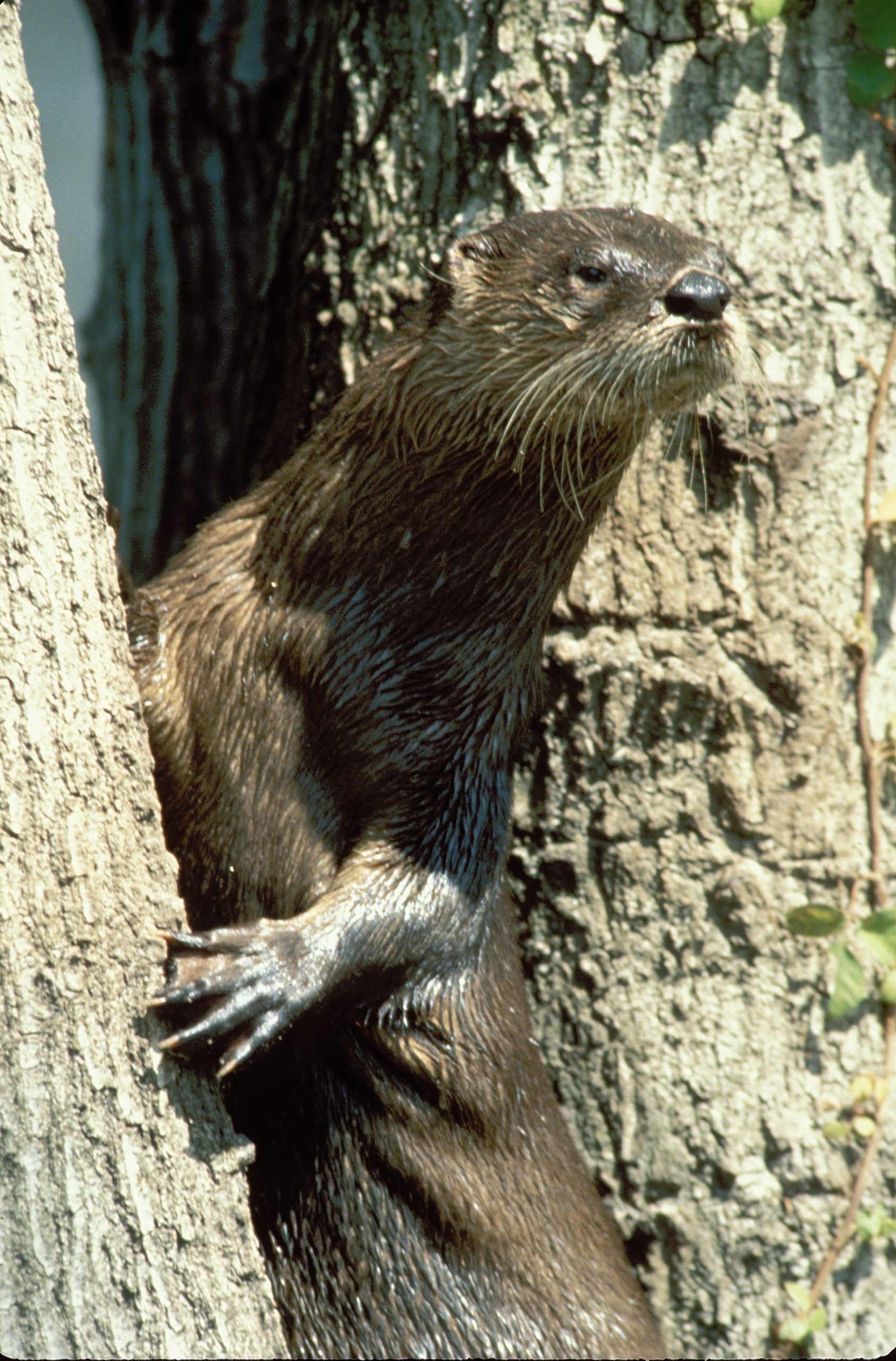Some information may be outdated.
The Utah Division of Wildlife Resources is asking the public to report any river otter sightings to the agency, it announced in a July 12 press release. There is no current population estimate for otters in the state, and the DWR hopes to gather information to support better management of the species and its habitat.
“River otters are important because they are an indicator of how healthy the aquatic environment is around Utah,” DWR Non-game Mammals Coordinator Kim Hersey said in the press release. “They have a low tolerance for polluted water and require an abundant prey population. Knowing where they are located around the state is vital to helping us manage this species. Anglers and other river recreationists are on the water a lot and can help us understand the distribution of otters throughout the state by reporting any sightings.”
While otters are native to Utah, they have never been observed in great abundance in the state. Of existing records from expeditions in the area between 1540 and 1872, only one expedition, between 1826 and 1829, reported otters in Utah. However, DWR literature notes that otters are secretive, have wide ranges and low densities, and can be difficult to monitor. In 1899, the Utah State Fish and Game Commission (a precursor to the Utah Wildlife Board) classified otters as a rare species and the state legislature protected them from being harvested. Since then, it has remained illegal to harvest otters in Utah.
Almost a century later, the DWR declared river otters a “state sensitive species” and soon began reintroducing the animals along the Green River. Since that project, river otter distribution has increased in northeastern Utah. In southeastern Utah, they’ve been reported along the Colorado and San Juan rivers and in Lake Powell.
Otter or not?
Otters are carnivorous aquatic mammals with long bodies, sleek brown fur, and webbed feet. They’re known for playful behavior, and live near rivers, lakes, and reservoirs; they eat primarily fish, crustaceans, and amphibians, but will also eat small birds and mammals. Wildlife watchers sometimes confuse otter aquatic mammals, like beavers, for otters.
“Although there are many differences between the species—and it is easy to tell them apart out of water—when you just see a brown, furry face swimming, it can be quite easy to misidentify the species,” said Hersey.
The DWR offers tips on how to correctly identify an otter. They are longer, leaner, and more agile than beavers or muskrats; otters also swim faster, and have a long, round, furry tail. A muskrat, by contrast, has a smooth tail, and beavers are best identified by their flat, paddle-shaped hairless tails. Minks could also be mixed up with otters, and can be differentiated by size: minks are similar in size to domestic ferrets, while otters are over 2 feet long and can weigh around 20 pounds. Otters also have a rounded nose, while minks have a pointed face.
Management
“The data from these sightings will help us update the state river otter management plan,” Hersey said. The current river otter management plan was meant to be used between 2010 and 2020, and updated based on conditions. The plan’s introduction says that it will be reviewed and rewritten during 2020.
“Before we can plan for the future, we need a good idea of the current status of otters in the state,” said Hersey. “Based on these reported sightings, we will follow up with targeted surveys to gather additional information on otter populations. It will also help us identify areas without otters that may be candidates for future transplant populations.”
Concerns about otters include habitat degradation, trapping, and monitoring.
“Many of the river drainages in Utah that historically supported populations of river otters have been severely altered,” according to the 2010-2020 river otter management plan. The DWR’s efforts to support recreational fishing opportunities for the public have had the added benefit of also providing suitable prey to support otters.
Both illegal intentional trapping, and incidental trapping, of otters have been concerns for maintaining otter populations. The DWR encourages trappers targeting legal species to use traps designed to avoid trapping otters.
To report a sighting of a river otter, email a photo or video of either the animal or signs of the animal, including tracks or feces, as well as a specific location to utahotters@gmail.com.
Appreciate the coverage? Help keep local news alive.
Chip in to support the Moab Sun News.





